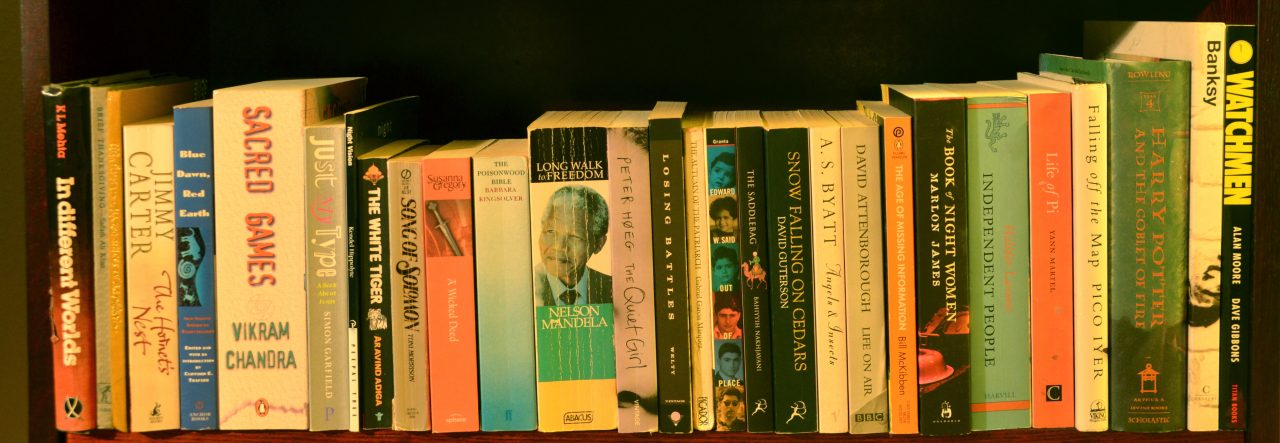Published by Canongate Books, 2020, 448 pages.
“The newspapers say that the [Italian] soldiers marched to Axum and took the city without a single shot being fired. … They claim that…Adua was finally, proudly, taken by the Italians on 5 October 1935 and the tiny, nondescript village welcomed the invaders with bowed heads and ululations.
“This is the way it has been written, so this is the way it has been remembered. … [W]hat the newspapers and memory have failed to say is that you do not bring one hundred thousand men into a country in graceful strides. You do not send hundreds and hundreds of donkeys and lorries and laborers to follow them without incident. Because one hundred thousand men, however ravenous they might be for this beautiful land, can never total the numbers of Ethiopians intent on keeping their country free, regardless of mathematics.”
In 1935, the Italian army invaded Ethiopia. The capital Addis Ababa fell in May 1936 and the Ethiopian emperor Haile Selassie went into exile in England. This is the story of how the Ethiopians fought back—most importantly, of the women who fought, and who until now have been just a footnote in history.
The book starts 40 years after the resistance, with the central character, Hirut, waiting to meet a man at a train station. She is holding a metal box with photographs taken during the war by Ettore Navarra, the Italian army’s photographer: “mementos scavenged from the life of the frightened young woman she was in that prison. … She has come this far to return the box, to rid herself of the horror that staggers back unbidden. She has come to give up the ghosts and to drive them away.”
The story then goes back to 1935, when Hirut was a young maid in the house of Kidane and Aster, who is grieving the death of her child. When we meet her, Aster is in the tiny room that Hirut shares with the woman known only as the cook, looking for a necklace she accuses Hirut of stealing. Instead, she finds an old gun that Hirut’s father had left her. Kidane manages to calm his wife down but confiscates the gun.
Kidane needs the gun to help put together a force to resist the imminent invasion of Ethiopia by the Italian army. Soon the resistance, including the women, are all heading into the mountains to fight the invaders. This is when Aster comes into her own. Dressed in Kidane’s tunic and trousers and in his father’s cape—much to her husband’s disapproval—she becomes a force to be reckoned with.
The news has got around that the emperor has left Ethiopia. People lose hope and the will to fight. Kidane realizes that one of his men, Minim, a “soft-spoken man with the strange name that means Nothing”, looks exactly like the emperor. So Kidane teaches him to act like the emperor and assigns Aster and Hirut as his guards. Minim is the “shadow emperor” of the title. The ploy works: the people, having glimpsed their leader, are mobilized again.
The book moves between the Ethiopian camp and their enemy, the Italian army contingent under Commander Carlo Fucelli, and where Ettore is serving as a photographer. Ettore has his own problems: he is Jewish, and his parents are facing persecution back in Italy where Jews are being rounded up.
The book has a multi-faceted structure: Ettore’s photographs, described throughout the book, bear witnesses to the events—a counterpoint to fallible memories. There are interludes with Haile Selassie before his exile to England and during it, obsessively listening to the opera Aida to try to understand the enemy. And scattered in between the chapters is the chorus—it is in the tradition of a Greek chorus but, as Maaza Mengiste points out, the chorus is a device that has been around as long as humans have been telling stories.
The structure works beautifully—interspersing the narration with the photos, the interludes and the chorus gives it a richness that brings the narrative to life.
However, it is the women who are the centre of this book: each in her own way, formidable. Hirut discovers a talent for healing and works tirelessly on the battle fields, helping the wounded, driven by the memory of one man whom she could not save. Aster’s strength comes to the fore, making her a natural leader. The cook holds her own and refuses to be cowed. And then there is Fifi, a beautiful woman who is the Fucelli’s mistress and a spy for the Ethiopian army. She is one of the few women in the book who actually wields power.
The characters are nuanced—each has darkness and light within them, and they all struggle with internal conflicts. Mengiste takes the time to tell the stories of all the main characters. Like Kidane and Aster, Haile Selassie is mourning his daughter, whom he married off at 14 to a 50-year-old man for political reasons, a marriage that killed her. Her ghost is a constant presence.
This is a novel about how the past is remembered and retold, and how we are haunted by our memories and the ghosts of the dead.
The Shadow King is a masterful book: it is not just the fact that Mengiste writes beautifully but the way she puts the story together, with all its complexities. It is time that the Ethiopian women who took up guns with the men—like Mengiste’s own great-grandmother—had their story told. This is one of the best books I’ve read this year.


Pingback: The Best Books of 2021 – Talking About Books
Pingback: The Best Books of 2023 – Talking About Books